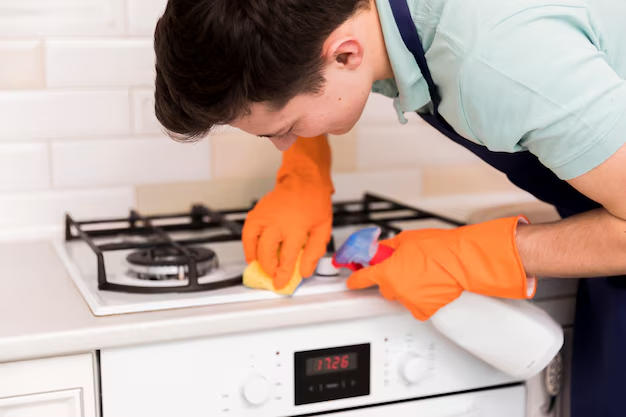Finding the Perfect Temperature: What Number Should Your Refrigerator Be On?
The question of what number your refrigerator dial should be set on might seem trivial until you find your milk has mysteriously spoiled, or your lettuce has frozen into a block. Properly regulating your refrigerator's climate not only preserves food but also conserves energy, making it a crucial consideration in household management. This comprehensive guide dives into the optimal settings for refrigerators, providing insights into the nuances of refrigerator maintenance, temperature settings, and energy efficiency.
Why Refrigerator Temperature Matters
Your refrigerator does more than simply keep your food cool. It preserves the taste, texture, and nutritional value of your groceries. Setting the temperature correctly is essential in preventing the growth of harmful bacteria, such as Salmonella and E. coli, which thrive in warmer environments. Maintaining the right temperature is key to food safety and longevity.
The Ideal Refrigerator Temperature
According to general guidelines, the optimal refrigerator temperature is at or below 40°F (4°C), but not lower than 32°F (0°C). This range prevents freezing while keeping perishable items fresh. But how does one ensure this balance on a refrigerator dial that reads from 1 to 7 or 1 to 9?
Key Adjustment Tips:
- Start in the middle: Most refrigerators come pre-set to the mid-range on their dials – typically 4 on a 1-7 scale or 5 on a 1-9 scale. This generally maintains the internal temperature around 37°F (3°C).
- Adjust as needed: Small fluctuations might necessitate changes. Moving the dial up cools the refrigerator further, while reducing the dial setting warms it.
Factors Affecting Temperature Settings
Your refrigerator's ideal setting can be affected by various factors, including location, content, and external temperatures.
Room Temperature
Is your refrigerator situated in a particularly warm or cold room? Temperature fluctuations can impact how hard the appliance has to work to maintain the internal climate. In warmer climates, you might need to set it slightly lower to compensate for the additional workload.
Refrigerator Content
The amount of food inside also plays a pivotal role. Full fridges retain cold better, using less energy, whereas emptier fridges might need a lower setting to maintain the desired temperature.
Opening and Closing Frequency
Every time you open your fridge door, the internal temperature rises. Frequent access requires a lower setting to quickly restore the optimal climate.
Understanding Refrigerator Dials and Thermostats
Exploring how refrigerator dials work can demystify the process of achieving the perfect chill.
Basic Dial Settings
Most refrigerators with a dial feature settings ranging from cold to coldest. A typical dial operates such that a higher number results in a cooler setting – however, this isn't universal. Consult your fridge’s manual for specific guidance.
Digital Thermostats
Many modern refrigerators are equipped with digital thermostats, providing a more precise temperature setting. These can often be found in high-end models, allowing you to set and view the exact temperature easily.
Checking the Temperature
To ensure your fridge is at the optimal temperature:
- Use a thermometer: Place a refrigerator thermometer in the central area, away from the door or back walls, for an accurate reading.
- Monitor regularly: Check the thermometer periodically to ensure consistency, making adjustments as necessary.
Pro Tips for Refrigerator Efficiency
Maintaining the correct temperature contributes to energy efficiency and appliance longevity. Here are some practical tips:
- Keep the coils clean: Vacuum the coils at least twice a year to enhance performance.
- Allow air circulation: Avoid overstuffing. Leave space for air to circulate, ensuring even cooling.
- Check door seals: Ensure seals are intact to prevent cool air from escaping. A quick test involves closing a dollar bill in the door. If it slides out easily, the seal might need replacing.
- Organize strategically: Place items requiring colder temperatures, like dairy, towards the back and ensure nothing blocks air vents.
Troubleshooting Common Temperature Issues
Experiencing issues with your refrigerator’s temperature? Here are common challenges and potential solutions:
Refrigerator Not Cooling
If the fridge isn't reaching the desired temperature:
- Check the settings: Ensure it's set to a low enough temperature.
- Inspect the condenser fan: Ensure it's functioning, as failure can prevent proper cooling.
- Examine the evaporator coils: Frost buildup on coils can impede airflow and cooling efficiency.
Freezing Food
If your groceries are turning into ice:
- Adjust the dial: It may be set too low.
- Move perishables: Items like fresh vegetables shouldn't be stored near the freezer section of a top-mount refrigerator.
Uneven Cooling
Ensure the temperature is uniform throughout the fridge:
- Redistribute contents: Avoid blocking airflow with too many items.
- Install a small fan: Placing a fan inside can help circulate air evenly.
Key Takeaways for Optimal Refrigerator Management
Here’s a concise summary to help you maintain ideal refrigerator conditions:
- 🕒 Set Between 37°F and 40°F: Ensures food safety without freezing fresh produce.
- 📈 Middle Dial Settings: Start here and adjust based on your unique fridge environment.
- 💡 Use a Refrigerator Thermometer: Confirm internal temperatures regularly.
- 🔄 Monitor Usage Impact: Adjust for room temperature changes and frequent door openings.
- ♻️ Enhance Efficiency: Clean coils, check seals, and allow for airflow.
Staying informed and proactive with refrigerator maintenance not only extends food freshness but also improves energy efficiency in your home. By understanding the factors influencing your refrigerator's performance, you can make well-informed decisions capable of saving money and resources while safeguarding the health and quality of your stored goods.
Balancing refrigerator settings requires attentiveness but is easily achieved through these practical measures, transforming what might be a minor household detail into a linchpin of convenience and sustainability.
